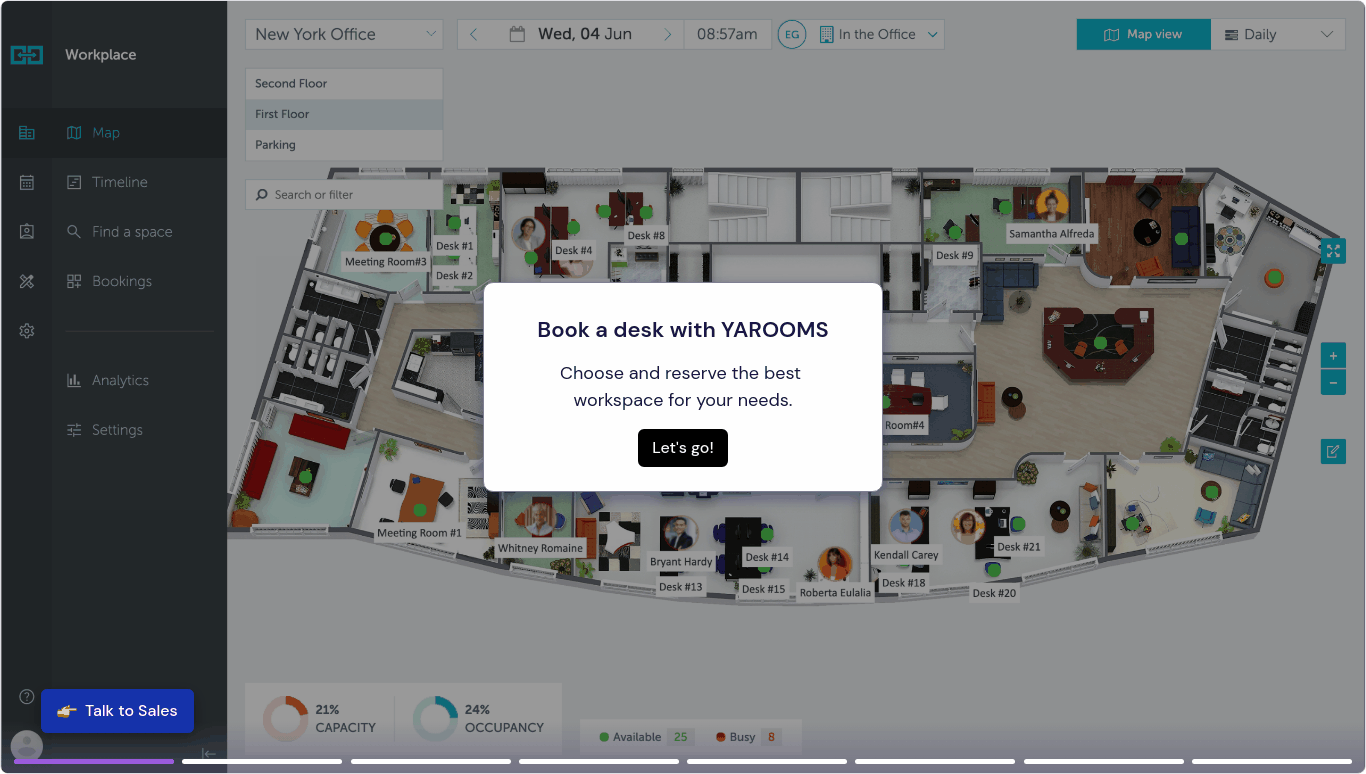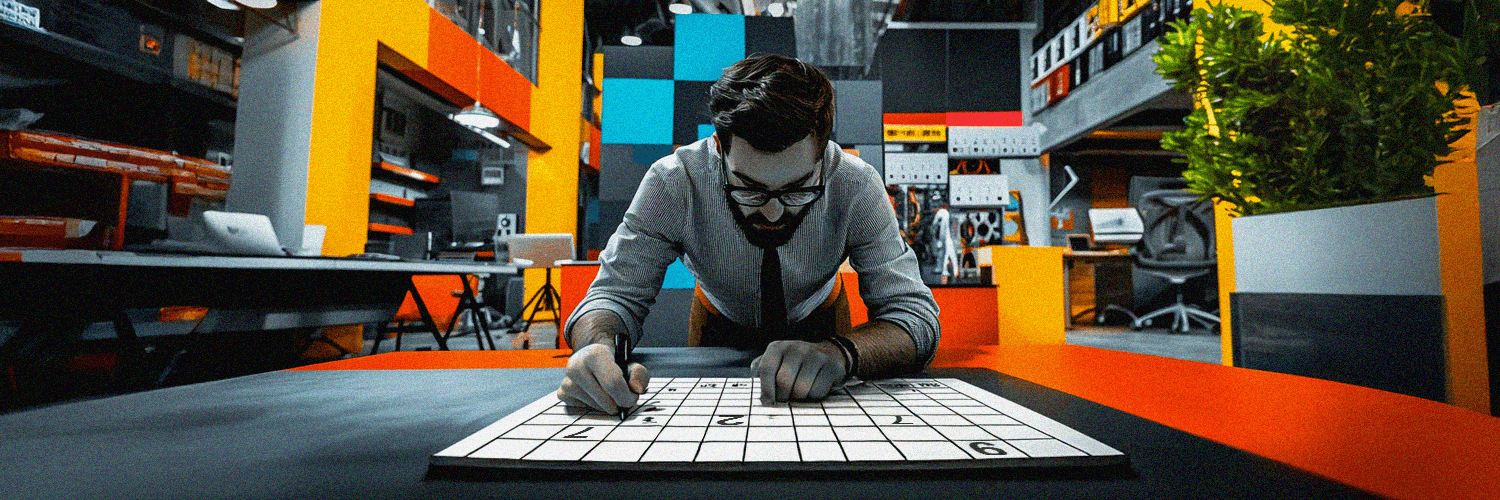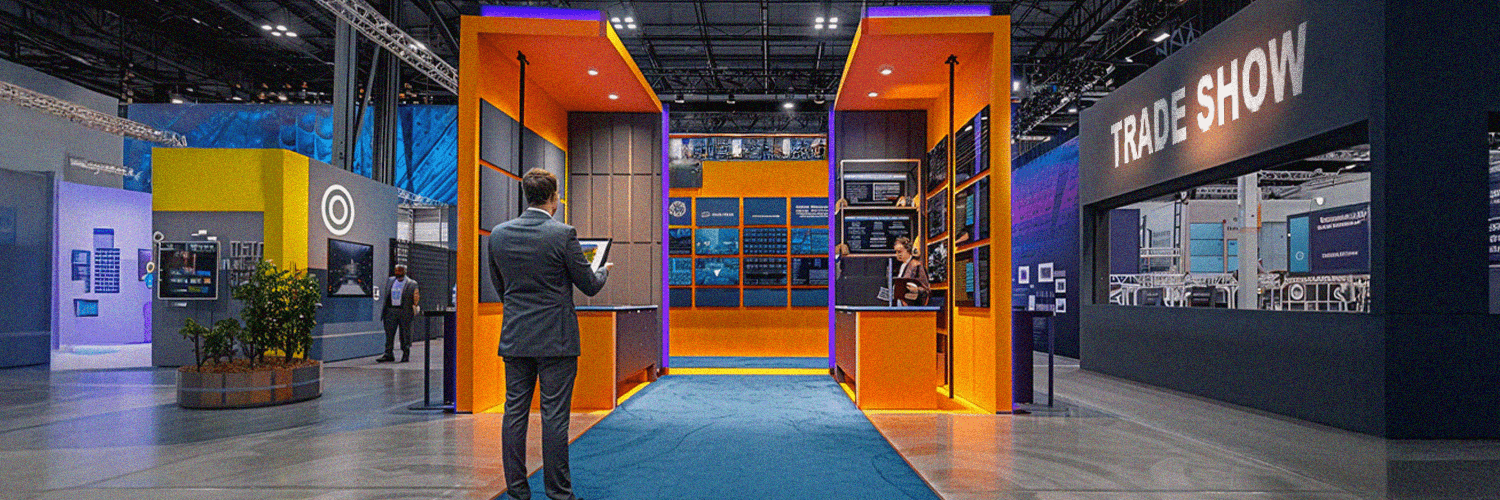[Updated on 4 November, 2025]
How much space does an office really need?
It’s a question every company faces - whether you’re setting up your first workplace, downsizing, or simply wondering if your current office feels too cramped (or too empty).
The truth is, there’s no single “normal office size”. It depends on how your teams work, how often they come in, and the kind of environment you want to create.
Still, knowing the average office size in square feet per person helps you make smarter space planning decisions, control costs, and design a workplace that actually fits your people.
TL;DR:
-
The average office size per employee in 2026 is forecasted to be 100–150 sq. ft.
-
Industry benchmarks vary: from 100 sq. ft. in tech to 200+ sq. ft. in finance.
-
Hybrid work and hot desking cut space needs by 30–40%.
-
Regional averages: North America uses the most space, Asia the least.
-
Use data and analytics to right-size your office and lower costs.
-
Plan 15–20% extra capacity for growth and flexibility.
Understanding the Average Office Size
The idea of what counts as a typical office size has changed dramatically over the past few years.
Before 2020, most companies planned for roughly 225 square feet per employee, giving everyone a dedicated desk and plenty of breathing room. But as hybrid work became the norm, many organizations realized they could operate efficiently with less space - and often, with happier employees.
Today, the average office size per employee sits between 150 and 175 square feet, depending on how often people come in and how spaces are used. This shift reflects a broader move toward flexible layouts, shared desks, and activity-based working zones rather than traditional cubicles.
Office Density Classifications
To make space planning easier, workplaces are often grouped into three office density categories: a simple way to benchmark efficiency and comfort:
-
Low-density (spacious) layouts: 250–500 sq. ft. per employee (common in executive offices or creative agencies)
-
Average density: 150–250 sq. ft. per employee (typical for hybrid or collaborative offices)
-
High-density layouts: 80–150 sq. ft. per employee (used by startups or cost-conscious teams)
Each approach has trade-offs. Larger spaces support privacy and focus; smaller ones encourage collaboration and reduce overhead. The right balance depends on your team size, work style, and office culture - not just a single square footage number.
| Category | Square feet per employee | Typical layout example | Best for |
|---|---|---|---|
| Low-Density | 250–500 sq. ft. | Private offices, executive suites, or creative studios | Companies prioritizing privacy, comfort, or prestige |
| Average | 150–250 sq. ft. | Hybrid workplaces with shared desks and collaboration areas | Most mid-sized organizations adopting flexible work models |
| High-Density | 80–150 sq. ft. | Open-plan layouts or compact co working spaces | Startups, call centers, or teams maximizing space efficiency |
Comparing different office density categories
Average Office Size by Industry (2026 Forecast)
Every industry has its own definition of a standard office size.
Work styles, privacy requirements, and collaboration intensity all influence how many square feet per person are needed. Knowing these benchmarks helps you plan smarter - balancing comfort, productivity, and cost efficiency.
Professional Services
In law firms, consulting, and other professional services institutions, the average office size per employee tends to be higher than in most sectors. Confidential client work and frequent private meetings call for enclosed offices and larger personal spaces.
| Role type | Average office square footage |
|---|---|
| Private offices (executives, partners) | 225–300 sq. ft. |
| Associates | 120–150 sq. ft. |
| Support staff | 90–120 sq. ft. |
Average office space requirements for different roles in professional services
Creative & Media Organizations
Creative agencies, design studios, and production teams thrive in flexible, open environments. Their typical office size allows room for brainstorming, prototyping, and teamwork.
These offices often feature materials libraries, studio spaces, and project zones that extend beyond traditional desks - meaning the total office square footage is usually above the average.
| Role type | Average square feet per person |
|---|---|
| Creative Directors / Leads | 175–225 sq. ft. |
| Designers / Creatives | 100–150 sq. ft. |
| Production & Support | 80–100 sq. ft. |
Average square feet per person in creative & media organizations
Manufacturing & Industrial
For companies that combine office and plant operations, space planning must account for both environments.
Administrative areas are smaller, while technical and executive spaces remain generous. Additional space is typically required for sample storage, technical documentation, and transition areas between office and production floors.
| Role type | Average office space (sq. ft.) |
|---|---|
| Executives | 180–250 sq. ft. |
| Engineering / Technical | 125–175 sq. ft. |
| Administrative Staff | 90–125 sq. ft. |
Average office size in manufacturing industry
Technology Companies
Tech organizations favor collaborative layouts that support hybrid work and agile development.
Their typical office size per person is lower, but they offset it with shared areas and breakout zones.
About 30–40% of total office square footage is often dedicated to collaboration spaces, innovation labs, or shared meeting rooms - a key reason tech offices feel open and dynamic.
| Role type | Average office space (sq. ft.) |
|---|---|
| Engineers & Developers | 125–175 sq. ft. |
| Product & Design Teams | 100–150 sq. ft. |
| Sales & Marketing | 90–120 sq. ft. |
Average office space requirements (by role) in technology companies
Education
Educational institutions - from universities to private training centers - often need multi-use spaces for administration, collaboration, and student engagement.
Typical office size in education must accommodate both quiet work and group interaction, so layouts tend to blend private rooms with open meeting spaces.
| Role type | Average office square footage |
|---|---|
| Department Heads / Faculty Offices | 150–200 sq. ft. |
| Administrative / Support Staff | 100–130 sq. ft. |
| Shared Student or Meeting Areas | 30–40% of total floor space |
Average office size in education
Healthcare
In healthcare organizations, office square footage per employee varies widely depending on patient interaction and compliance requirements.
Additional space is often allocated for medical storage, secure data areas, and patient consultation rooms, pushing the average office size in healthcare above other industries.
| Role type | Average office space (sq. ft.) |
|---|---|
| Physicians / Administrators | 180–250 sq. ft. |
| Nurses / Support Staff | 100–150 sq. ft. |
| Records / Billing Teams | 90–120 sq. ft. |
Average office square footage per employee in healthcare
Banking & Finance
Banks and financial institutions prioritize confidentiality, client experience, and brand presence, so their standard office size leans toward the higher end.
Client lounges, private meeting areas, and secure file storage contribute to larger average office square footage per employee than in most sectors.
| Role type | Average office size (sq. ft.) |
|---|---|
| Executives / Advisors | 200–275 sq. ft. |
| Analysts / Associates | 120–150 sq. ft. |
| Customer-Facing Staff | 90–120 sq. ft. |
Office space requirements in banking and finance industry
💡 Quick takeaway
There’s no single normal office size that fits every industry. However, most modern workplaces now average between 150 and 200 square feet per person, adjusting up or down depending on privacy needs, space utilization, and collaboration style.
Average Office Size by Region
The average office size per employee varies greatly depending on geography, culture, and cost of real estate. Understanding these regional office space differences is crucial for companies with global teams or plans to expand internationally.
North America vs. Europe vs. Asia-Pacific
Recent workplace studies reveal clear variations in office square footage per person across regions:
| Region | Average office size per employee in 2025 | Typical layout trend |
|---|---|---|
| North America | 150–175 sq. ft. | Larger private offices and mixed hybrid layouts |
| Europe | 100–125 sq. ft. | Compact, collaborative, and sustainability-focused designs |
| Asia-Pacific | 75–100 sq. ft. | High-density open spaces emphasizing efficiency |
Comparing office square footage per employee in different regions
That means a North American office can be nearly 50% larger than a typical European workplace - and over 75% larger than those in the Asia-Pacific region. These differences reflect local workplace culture, real estate constraints, and organizational norms. In essence, office space mirrors values: North America prioritizes comfort and personal territory, Europe balances efficiency with design, and Asia-Pacific optimizes every square meter for practicality and cost.
Regional Trends in Office Space Reduction
The amount of office square footage per employee is shrinking worldwide - but not at the same rate everywhere.
| Region | Change since 2000 | Average space per person (2026 forecast) |
|---|---|---|
| Asia-Pacific | ↓ 24% (from 12 m² → 9 m²) | 97 sq. ft. per employee |
| North America | ↓ 10–15% | 160 sq. ft. per employee |
| Europe | ↓ 10–15% | 115 sq. ft. per employee |
Comparing office space downsizing trends across Asia-Pacific, North America, and Europe
Asia-Pacific has seen the most dramatic decrease as cities densify and office costs rise. Meanwhile, North America and Europe are moving more gradually toward flexible, shared spaces rather than fully private offices.
Urban vs. Suburban Office Space Differences
Location also influences how much space each employee gets.
| Region | Urban offices (sq. ft. per person) | Suburban offices (sq. ft. per person) | Difference |
|---|---|---|---|
| Europe | 85–100 | 100–120 | 15–20% smaller in cities |
| North America | 140–160 | 160–175 | 5–10% smaller in cities |
| Asia-Pacific | 75–100 | 80–105 | Minimal difference |
Urban vs. suburban offices size comparison across regions
European markets show the largest urban-suburban gap, while Asia-Pacific remains consistently compact due to high-density urban planning. These insights help global workplace planners design location-specific strategies that respect local norms while optimizing for efficiency and cost.
💡Quick Takeaway
Globally, the average office space per person ranges from 75 to 175 square feet, depending on region, industry, and city type. Multinational companies increasingly use data-driven space planning to adapt layouts for each location, ensuring every square foot supports both employee well-being and real estate efficiency.
How Hybrid Work Has Changed the Average Office Size
Hybrid work has permanently reshaped office space requirements worldwide. Instead of a 1:1 desk-to-employee ratio, most companies now plan for shared workstations, fluctuating attendance, and collaboration zones that make better use of every square foot.
The result? A smaller average office footprint - but smarter, more dynamic workplaces.
Global Office Utilization Patterns
Office utilization - the share of desks actually used - has dropped dramatically since pre-pandemic times.
In 2019, offices were about 64% full on an average workday. By 2023, that figure fell to 35% globally, revealing how much hybrid models have reshaped space needs.
Regional differences are clear:
-
The Americas average around 31% utilization,
-
EMEA (Europe, Middle East, Africa) sits near 36%, and
-
Asia-Pacific leads slightly higher at 40%.
Although office square footage per person has decreased, attendance flexibility has increased. In 2025, 88% of companies require employees to spend at least a few days in the office - up nearly 20% since 2022.
Optimal Desk-to-Employee Ratios
Finding the right desk-sharing ratio is key to efficient hybrid planning:
| Workplace model | Recommended desk-to-employee ratio | Average office space per person |
|---|---|---|
| Full-time office | 1:1 | 150–175 sq. ft. |
| Hybrid (2–3 days/week) | 0.7:1 | 100–125 sq. ft. |
| Hybrid (1 day/week) | 0.5:1 | 80–100 sq. ft. |
Optimal desk sharing ratios for different workplace models
Organizations with employees coming in only once a week have reduced their office space demand by roughly 40% between 2019 and 2025. This recalibration allows companies to lower real estate costs while maintaining an efficient and comfortable environment.
Weekly Attendance Patterns
Knowing when people actually come in helps refine the average office size per employee and plan for demand peaks.
| Day | Typical occupancy rate |
|---|---|
| Monday | ~50% |
| Tuesday | ~90% |
| Wednesday | ~90% |
| Thursday | ~85% |
| Friday | ~50% |
Average office occupancy rates in 2025, by day
Midweek (especially Wednesday) tends to be the busiest day, while Mondays and Fridays are often half empty. Using desk booking systems and real-time occupancy data helps prevent overcrowding and keeps utilization balanced.
Space Reduction Trends
The shift to hybrid work has driven significant space optimization:
- 80% of offices have downsized since the pandemic, representing a 20% increase since 2022
- 43% of organizations globally plan to decrease their portfolio size by more than 30% in the next three years
- The average square footage per person fell 22% globally in 2023, driven partly by a 44% increase in collaborative space since 2021
These statistics highlight the ongoing evolution in workplace strategy, with many organizations finding their optimal balance between remote and in-office work.
💡 Quick Takeaway
Hybrid work hasn’t just reduced office square footage per employee - it’s redefined it. Modern offices now average 100–125 sq. ft. per person, with more space devoted to meeting rooms, team zones, and social areas instead of traditional cubicles.
The best offices are no longer the biggest but the ones that make every square foot count.
How to Calculate Required Office Space Square Footage
There’s no one-size-fits-all number when it comes to office square footage. The right amount depends on how your teams work, how often they’re in the office, and how your space supports collaboration.
Still, a few simple steps can help you find your ideal range and make every square foot count.
Step 1: Use Office Square Footage Calculator Formula
Use this formula as a starting point for office space planning:
(Number of employees × Square footage per role) + (Meeting space × Frequency of meetings) + (Common areas × 0.3) = Total office space needed
For example, you’re planning office space for a team with the following setup:
- 50 employees, each needing 125 sq ft
- Meeting rooms totaling 1,000 sq ft, used 75% of the time
- Common areas (lounges, café, etc.) totaling 2,000 sq ft
Total Office Space Needed = (50 × 125) + (1000 × 0.75) + (2000 × 0.3)
Total Office Space Needed = 6250 + 750 + 600 = 7,600 sq ft
This calculation provides a baseline that can then be adjusted for hybrid work arrangements, growth projections, and specific facility requirements.
Step 2: Adjust for Different Workspace Types
Not all areas require the same amount of space:
-
Private offices: around 150–350 sq. ft. per person
-
Open workstations: roughly 60–110 sq. ft. per person
-
Cubicles: about 80–100 sq. ft. per person
-
Reception areas: 100–200 sq. ft., plus around 75 sq. ft. per visitor
-
Corridors and walkways: plan for about 30–40% of total usable space
Most balanced offices dedicate around 65% to individual work zones and 35% to collaboration or circulation.
Step 3: Plan Ahead for Growth
To keep your office square footage per person flexible as your business grows, plan for change:
-
Add 15–20% more capacity than you need today
-
Consider projected headcount in the next 3–5 years
-
Allow space for new technologies or hybrid setups
-
Expect shifts in department size or collaboration style
💡 Quick Takeaway
As a general rule of thumb:
-
Hybrid or open-plan offices: around 100–125 sq. ft. per person
-
Traditional layouts with private offices: around 150–250 sq. ft. per person
The best office isn’t the biggest - it’s the one that fits how your teams actually work.
Planning Shared Spaces in Your Office Layout
Once you’ve estimated your overall office size, it’s time to think about how that space is divided. Beyond individual workstations, shared areas - like huddle rooms, lounges, and support spaces - make the office functional and comfortable.
A well-balanced layout blends focus, collaboration, and relaxation zones that all contribute to a positive workplace experience.
Meeting and Conference Rooms
Meeting rooms are among the most used (and most miscalculated) parts of an office. The right size depends on how many people typically meet and what kind of work happens inside.
Here’s a practical guide:
-
Small rooms (2–6 people): about 100–150 sq. ft.
-
Medium rooms (6–8 people): around 150–200 sq. ft.
-
Large boardrooms (12–20 people): 500 sq. ft. or more
As a general rule, plan for 25–30 square feet per person in meeting spaces. This ensures people have enough room to focus, collaborate, and move comfortably without feeling cramped. If hybrid meetings are common, consider extra space for screens, cameras, and technology setups.

Break Areas and Social Zones
Break areas aren’t just for coffee - they’re where teams recharge and connect. The size of these areas can influence both morale and productivity.
Typical dimensions:
-
Break or lunch rooms: around 75 sq. ft. plus 25 sq. ft. per seated person
-
Casual meeting or lounge spaces: about 15 sq. ft. per person
-
Wellness or quiet rooms: 80–120 sq. ft. each
In hybrid workplaces, these zones often double as informal meeting spaces, helping employees stay engaged even on lighter attendance days.

Support and Utility Spaces
Support areas may not be client-facing, but they’re essential for smooth operations. When planning your office square footage, don’t overlook:
-
Reception areas: usually 100–200 sq. ft., depending on visitor volume
-
Storage rooms: start at 200 sq. ft., scaled to your needs
-
Print and copy zones: about 80–100 sq. ft. per station
-
Server or IT rooms: at least 150 sq. ft., or more for equipment-heavy environments
These spaces often get underestimated in early planning stages yet they’re critical for daily workflow, comfort, and safety.

💡 Quick Takeaway
A well-balanced office layout dedicates about 60–70% of its total space to work areas and 30–40% to shared and support zones. When every room - from the conference area to the copy room - has a clear purpose and the right square footage, your office runs smoother and feels better to work in.
How to Make the Most of Limited Office Space
When office square footage is tight, creativity matters more than size. Many companies are discovering that with smarter layouts, flexible work policies, and the right tech, you can achieve the same (or even better) productivity in less space.
Rethinking How You Use Every Square Foot
The most efficient workplaces aren’t always the biggest - they’re the most adaptable. Instead of focusing on average office size, focus on how each area supports real work.
Here are a few proven ways to maximize your footprint:
-
Adopt activity-based working: Design zones for different activities - deep work, collaboration, focus, and social interaction - rather than assigning one desk per person.
-
Use flexible furniture systems: Choose modular desks and mobile partitions that can be rearranged for projects or team changes.
-
Create multi-purpose areas: A lounge can double as a huddle zone in the morning and a quiet space later in the day.
-
Think vertically: Install wall-mounted storage and shelving to free up valuable floor space.
Together, these tactics can increase the functional capacity of your office without adding a single square foot.
Making Hybrid Model Work for Space Efficiency
Hybrid work has become one of the biggest levers for reducing office space per employee. When teams rotate attendance rather than all coming in at once, organizations can operate with smaller physical footprints while maintaining comfort and collaboration.
To manage this effectively:
-
Set clear team-based attendance schedules to stagger in-office days.
-
Group employees into “neighborhoods” - shared zones used by specific teams on specific days.
-
Designate spaces by activity, not by person: collaboration rooms, focus areas, project zones.
Companies that master this approach typically reduce their office footprint by 30–40% - while keeping employee satisfaction high.
How Technology Helps You Maximize Every Office Square Foot
Even the most carefully designed office layout can’t reach its full potential without the right tools to manage it. That’s where workspace management software like YAROOMS comes in, turning square footage data into actionable insights.
Modern office space management platforms help organizations monitor, optimize, and right-size their workplaces in real time. Instead of guessing how much space is being used, you get visibility into desk utilization, meeting room occupancy, and overall office efficiency.
Here’s how it works:
-
Desk booking systems let employees reserve a workstation before arriving, ensuring fair access to limited desks and preventing overcrowding. This keeps the average office size per employee consistent without the need for extra space.
-
Meeting room scheduling tools streamline collaboration by showing real-time room availability, reducing double bookings and wasted square footage.
-
Workplace analytics dashboards reveal actual space usage - highlighting which areas are underused or overbooked - so you can decide whether to expand, redesign, or reduce your office footprint.
See how YAROOMS’ desk booking system works — click on the media to access self-guided demo center.
With data-driven space utilization and flexible booking tools, organizations can make informed real estate decisions, reduce costs, and ensure every square foot of office space is used effectively.
Whether you’re managing one floor or multiple locations, YAROOMS gives you the visibility and control needed to keep your office square footage per person optimized - without sacrificing comfort or collaboration.
Real-World Results: How YAROOMS Helps Organizations Optimize Office Space
Across industries, companies are rethinking how they use their physical offices - and many are turning to workspace management software like YAROOMS to get measurable results.
Take Dedalus, a global leader in healthcare IT. When relocating its Vienna office to a smaller space in late 2021, the company faced a tough challenge: a growing team, limited desks, and the need to maintain efficiency without expanding its real estate footprint.
By implementing YAROOMS, Dedalus transformed its approach to office space utilization:
-
Introduced a flexible desk booking system that supports various seating strategies - from assigned desks to hot desking and team “neighborhoods.”
-
Rolled out an interactive floor map that makes navigation and booking effortless for employees, improving the daily hybrid work experience.
-
Leveraged workplace analytics to track space usage patterns and identify underutilized areas - enabling smarter, data-driven space planning.
Today, YAROOMS manages more than 1,150 workspaces and over 2,300 users across 10 Dedalus office locations. The platform helps the company maintain productivity and comfort while keeping its average office size per employee optimized, proving that technology can bridge the gap between efficiency and employee experience.
Emerging Office Space Trends for 2026
In 2026, the conversation around average office size will shift from “how big” to “how smart.”
As hybrid work continues to mature and organizations embrace data-driven planning, new trends are redefining what an efficient, human-centered workplace looks like - and how much office square footage per person is actually needed.
Downsizing and Right-Sizing with Data
The shift toward smaller, purpose-driven offices is accelerating. Organizations are no longer paying for unused space - they’re analyzing actual occupancy and utilization data to right-size their offices.
-
The typical office footprint in 2026 is between 4,000 and 6,000 sq. ft. for mid-sized teams.
-
The average office size per employee now ranges from 75 to 150 sq. ft., depending on hybrid attendance levels.
-
Companies using workplace analytics tools (like YAROOMS) report saving up to 35% in real estate costs by aligning space with real usage patterns.
This marks a clear departure from the “bigger is better” mindset of the past toward strategic, data-informed space planning.
Flexible and Reconfigurable Office Layouts
Flexibility has become the defining feature of the modern office design. With fluctuating in-office attendance and evolving team structures, adaptability is key.
-
Modular furniture and mobile walls allow fast layout changes.
-
Acoustic dividers and flexible partitions support smooth transitions between collaboration, focus, and social areas.
-
Companies increasingly design for multi-use functionality, ensuring every zone earns its keep throughout the week.
By combining flexible design with workspace management software, organizations can track utilization and adjust layouts based on real-time data while avoiding costly overhauls.
Activity-Based and Task-Oriented Zones
The traditional “rows of desks” layout is officially obsolete. In 2026, offices will be designed around how people work — not where they sit.
-
Activity-based layouts provide dedicated areas for focus, meetings, brainstorming, and rest.
-
Task-based zoning ensures each space supports a specific function, improving both comfort and productivity.
-
This design approach increases space efficiency by up to 25%, as shared areas are used more consistently throughout the day.
Employees now expect variety - not uniformity - and activity-based design delivers it without increasing total office square footage.
The Rise of Hot Desking and Shared Workspaces
By 2026, hot desking will become a core component of the modern hybrid office strategy. Rather than assigning one desk per employee, organizations will plan space dynamically - providing shared seating based on real attendance patterns and workplace analytics.
Most hybrid offices already operate with a 0.6–0.8 desk-to-employee ratio, meaning not everyone has a permanent workstation. Instead, employees reserve a desk through workspace management software before coming in, ensuring smooth coordination and optimal use of available space.
When supported by clear policies and intuitive technology like YAROOMS, this model makes hybrid work both efficient and equitable. Employees gain flexibility, facilities teams get accurate utilization data, and companies can reduce their office footprint by up to 40% without sacrificing comfort or productivity.
A strong example comes from the University of Sydney’s Faculty of Science, where YAROOMS has completely reshaped how teams use limited space. By implementing a flexible hot-desking policy powered by YAROOMS, the faculty streamlined workspace bookings, eliminated unused capacity, and avoided costly building expansions - saving over $100,000 annually.
Faculty Operations Manager Paul Brooks explains how their approach works:
“If you’re in the office three days a week, you’ll have your dedicated desk on those days — though you’ll still need to check in. On your out-of-office days, your desk becomes a shared resource, open to anyone.”
This model keeps the office dynamic and efficient, ensuring that every workstation and every square foot is actively used. It’s a perfect illustration of how data-driven desk booking systems like YAROOMS enable sustainable hybrid work environments.
💡Quick Takeaway
The offices of 2026 will be leaner, smarter, and built around data, flexibility, and employee experience. Instead of measuring success in square feet, companies now measure it in utilization, adaptability, and engagement - and tools like YAROOMS make that transformation measurable and sustainable.
FAQ: Office Space Requirements
What’s a Good Size for an Office?
A good office size depends on how your teams work and how often they’re on site, but most modern workplaces average 100–150 square feet per employee.
-
Hybrid offices often need less space - around 100–125 sq. ft. per person - since not everyone is in at once.
-
Traditional layouts with private offices typically require 150–250 sq. ft. per person.
The right size balances comfort, collaboration, and cost efficiency. Rather than aiming for a fixed number, use workspace analytics and desk booking tools (like YAROOMS) to track real utilization and right-size your office based on real-world data.
What’s the Minimum Size for an Office?
The minimum size for an office depends on local regulations, the type of work performed, and the desired comfort level - but here are general benchmarks:
- Legally / ergonomically: Most building and occupational standards recommend at least 70–100 square feet (6.5–9 square meters) per person in a traditional office setting.
- Bare minimum for compliance: Some countries set a lower threshold - around 50–60 square feet (4.5–5.5 square meters) per person - mainly for open-plan or high-density layouts.
- Comfortable modern average: Many organizations aim for 100–150 square feet (9–14 square meters) per employee to allow for desks, circulation, and collaborative areas.
How Many Square Feet per Employee by Industry?
The average office space per employee varies widely by industry and work style, but most organizations fall between 75 and 200 square feet per person:
-
Professional services (law, finance, consulting): 150–250 sq. ft. per employee
-
Technology companies: 100–150 sq. ft. per employee
-
Creative and media agencies: 100–175 sq. ft. per employee
-
Education: 100–130 sq. ft. per employee
-
Healthcare and life sciences: 120–200 sq. ft. per employee
-
Manufacturing and industrial offices: 90–175 sq. ft. per employee
-
Banking and financial institutions: 120–200 sq. ft. per employee
These numbers include both individual workspaces and shared areas like meeting rooms, lounges, and collaboration zones.
With workspace management platforms like YAROOMS, companies can track real-time occupancy and optimize these ratios - often reducing their footprint by 30–40% without impacting comfort or productivity.
What Are the Standard Reception Area Dimensions in Feet?
The ideal reception area size depends on your visitor volume and how much seating or branding space you want to include. In most offices, reception areas range from 100 to 200 square feet, with an additional 70–80 square feet per visitor for waiting or lounge space.
Here’s a quick guide:
-
Small offices (up to 25 employees): ~100 sq. ft.
-
Mid-sized offices: 150–200 sq. ft.
-
Large corporate or multi-tenant buildings: 250+ sq. ft.
When planning your office square footage, reception areas should feel open and welcoming but remain proportionate to total office size - typically about 3–5% of total floor space.
What’s the Average Cost of Office Space per Employee?
As of 2025, the average cost of office space per employee ranges between $5,000 and $12,000 per year, depending on location, industry, and office size.
Here’s a general breakdown:
-
High-cost urban centers (e.g., New York, London, Sydney): $10,000–$12,000 per employee per year
-
Mid-tier cities (e.g., Toronto, Amsterdam, Berlin): $6,000–$8,000 per employee per year
-
Smaller cities or suburban areas: $4,000–$6,000 per employee per year
Because the average office size per employee now sits around 100–150 sq. ft., the total cost depends heavily on rent per square foot. For instance, at $50 per sq. ft., an employee with 125 sq. ft. of space represents about $6,250 annually in real estate costs.
What’s the Average Square Footage of a Home Office?
The average home office size in 2025 ranges from 100 to 150 square feet, though layouts vary widely depending on space availability and work needs.
Here’s a quick breakdown:
-
Compact home offices: around 70–100 sq. ft. - ideal for a single desk setup or small corner workspace.
-
Standard home offices: 100–150 sq. ft. - common in spare bedrooms or converted nooks.
-
Larger dedicated offices: 150–250 sq. ft. - used for multi-monitor setups, meetings, or creative work.
In apartments and smaller homes, flexible furniture and vertical storage often help maximize efficiency without expanding square footage.
How to Determine Your Office Space Requirements?
Start by estimating how much space each person needs, then add room for meetings and shared areas.
A quick formula is: (Number of employees × space per person) + meeting areas + common spaces = total office space.
Most modern offices plan for:
-
100–150 sq. ft. per employee
-
25–30 sq. ft. per person in meeting rooms
-
30–40% of total space for hallways, break areas, and storage
Add a little extra (about 15–20%) to allow for growth or hybrid flexibility.
How Many Desks Fit in 1,000 Square Feet of Office Space?
The number of desks you can fit in 1,000 square feet depends on your layout and how much space you allocate per person.
Here’s a quick estimate:
-
Open-plan layout: about 8–10 desks (100–125 sq. ft. per person)
-
Moderate density: around 6–8 desks (125–150 sq. ft. per person)
-
Private offices or spacious layouts: 4–6 desks (150–200 sq. ft. per person)
If you’re using hot desking or desk booking software like YAROOMS, you can often support 1.5–2 times more employees with the same space - since not everyone is in the office every day.
How Much Office Space Do You Need for 20, 50, 100, or 200 People?
The amount of space you need depends on your layout and how much square footage per employee you plan for. Most modern offices average 100–150 sq. ft. per person, depending on whether they’re hybrid, open-plan, or traditional.
Here’s a quick reference guide:
| Team size | Hybrid / Open-plan (100 sq. ft. per person) | Traditional layout (150 sq. ft. per person) |
|---|---|---|
| 20 people | ~2,000 sq. ft. | ~3,000 sq. ft. |
| 50 people | ~5,000 sq. ft. | ~7,500 sq. ft. |
| 100 people | ~10,000 sq. ft. | ~15,000 sq. ft. |
| 200 people | ~20,000 sq. ft. | ~30,000 sq. ft. |
Add 15–20% extra for growth and shared spaces like meeting rooms or lounges. Also, if your teams work hybrid schedules, you may need 30–40% less space by using hybrid workplace software like YAROOMS.













